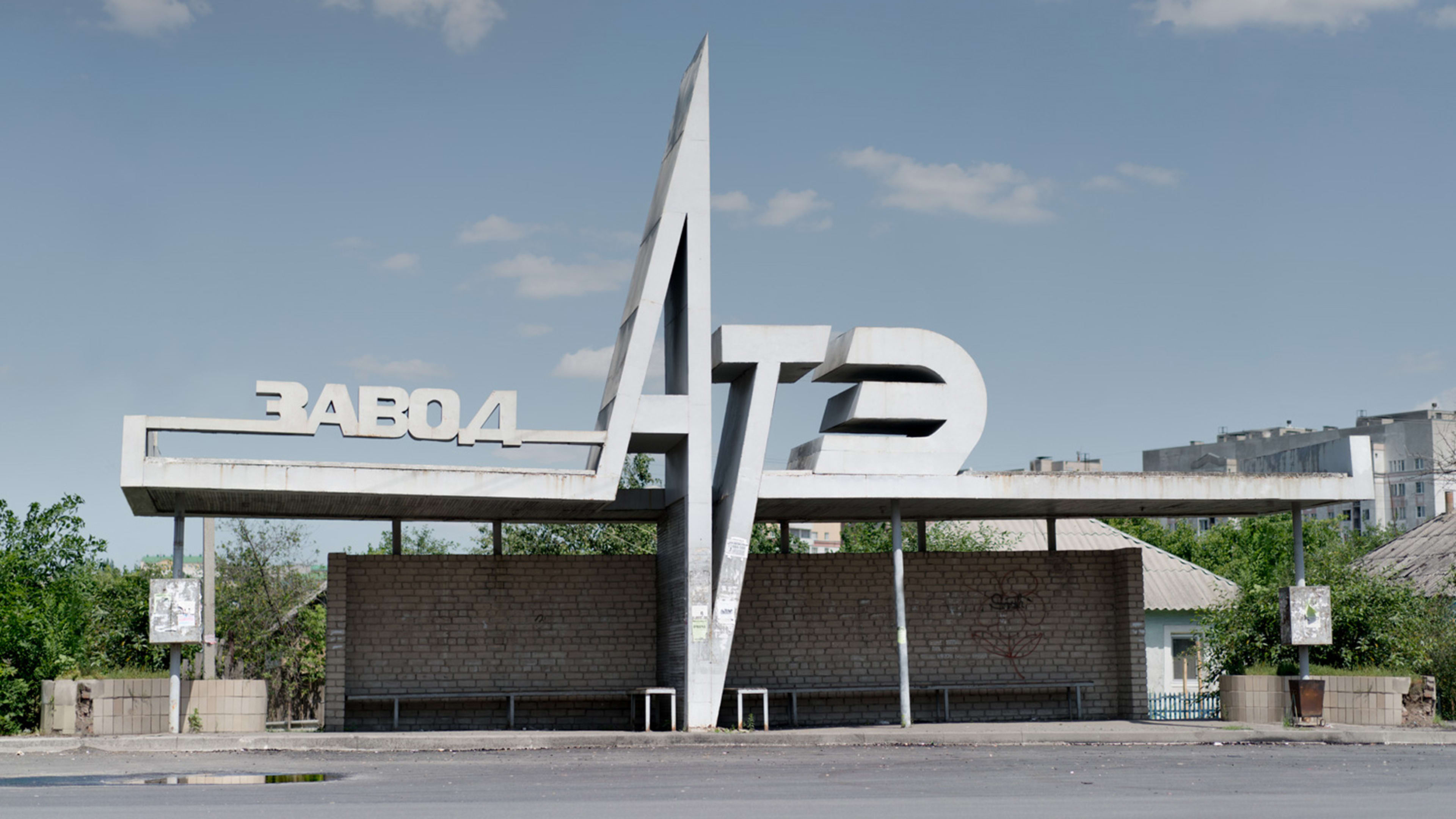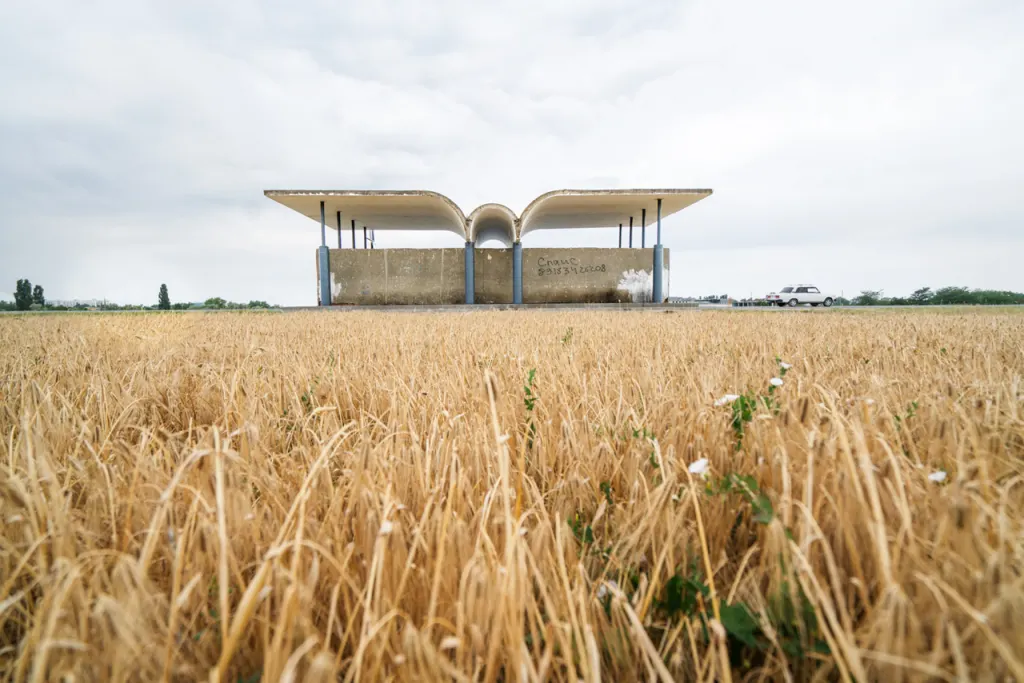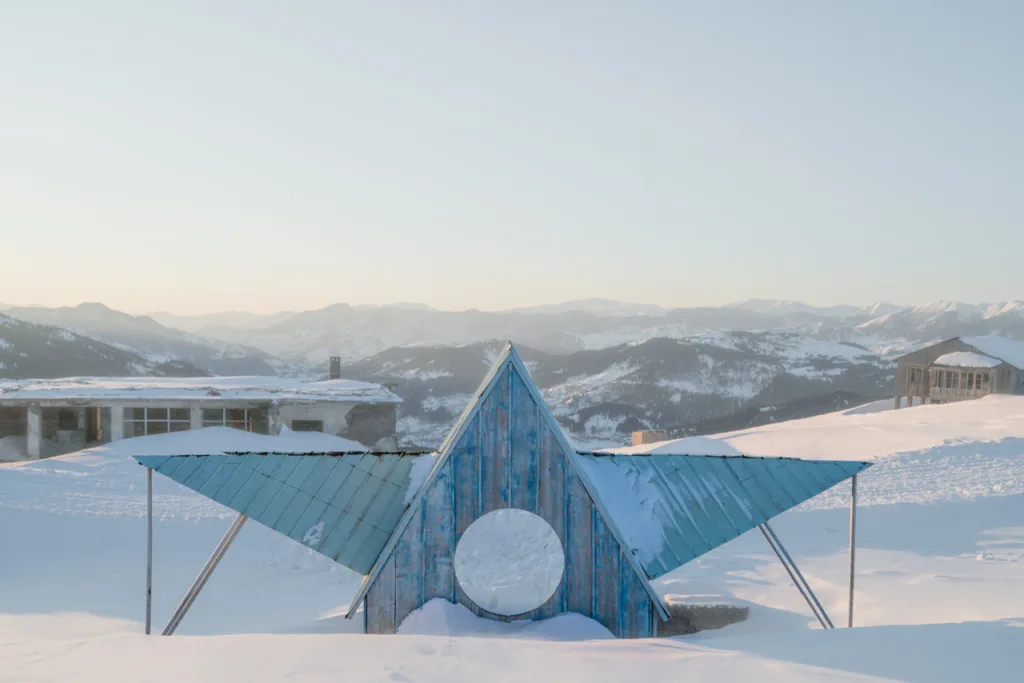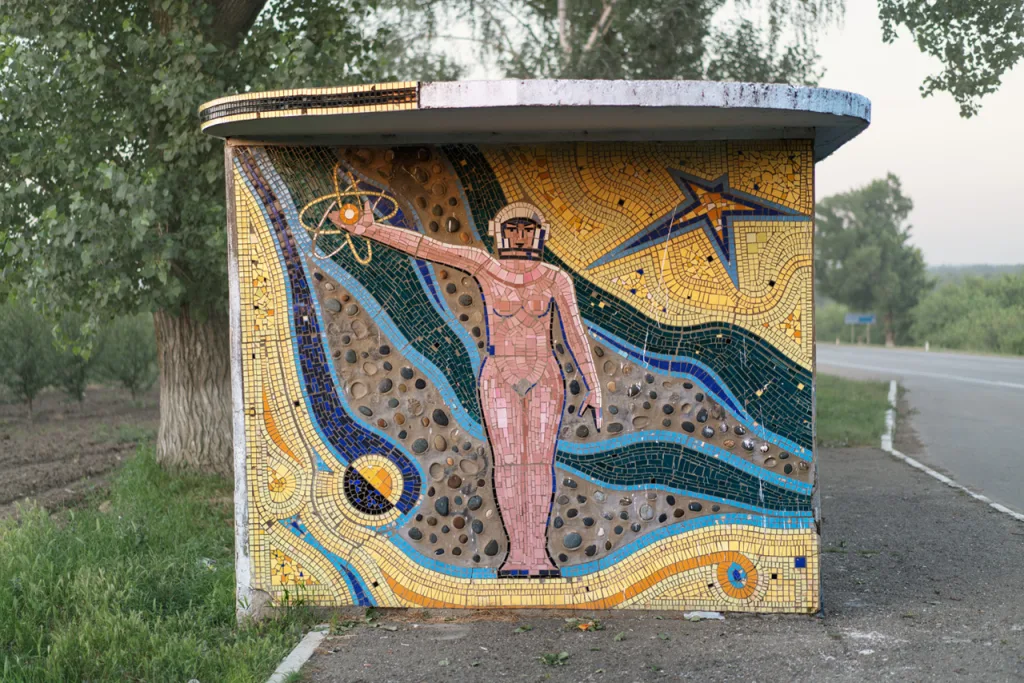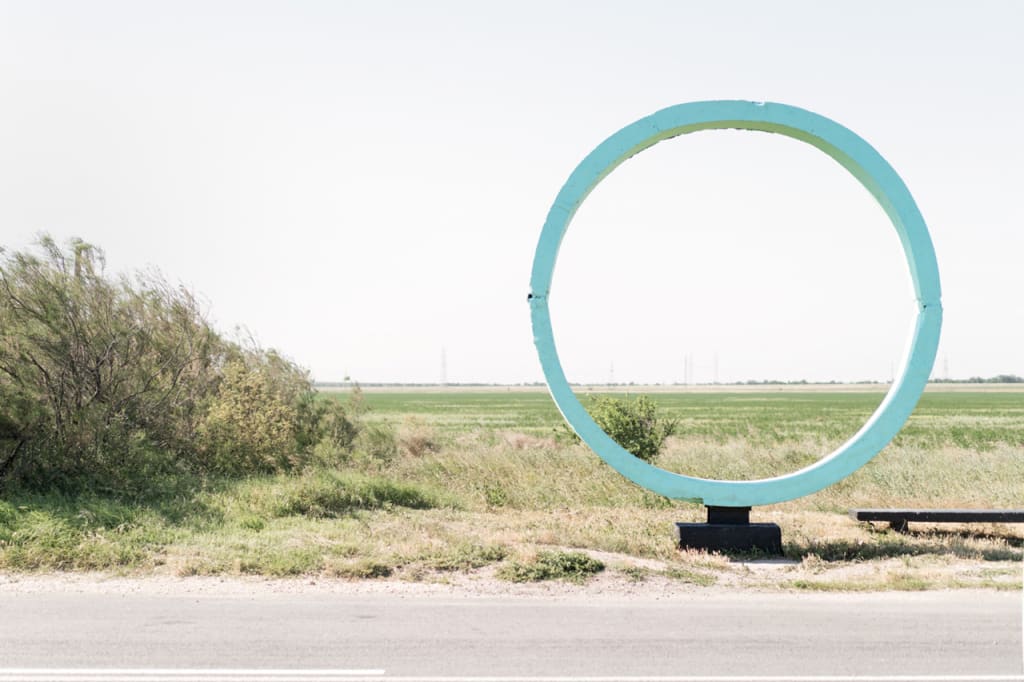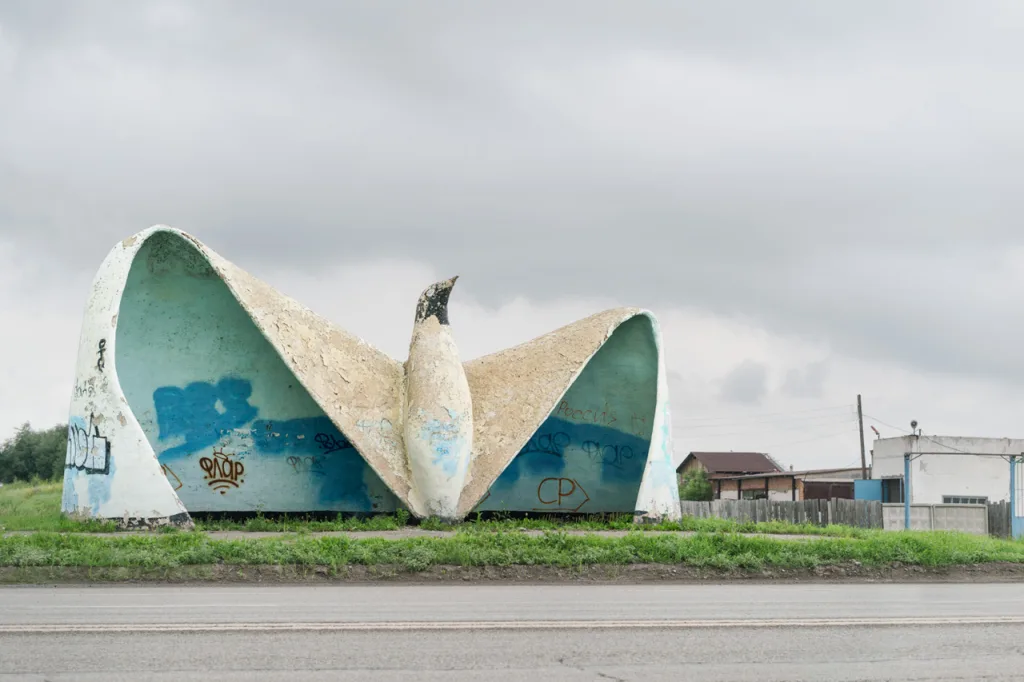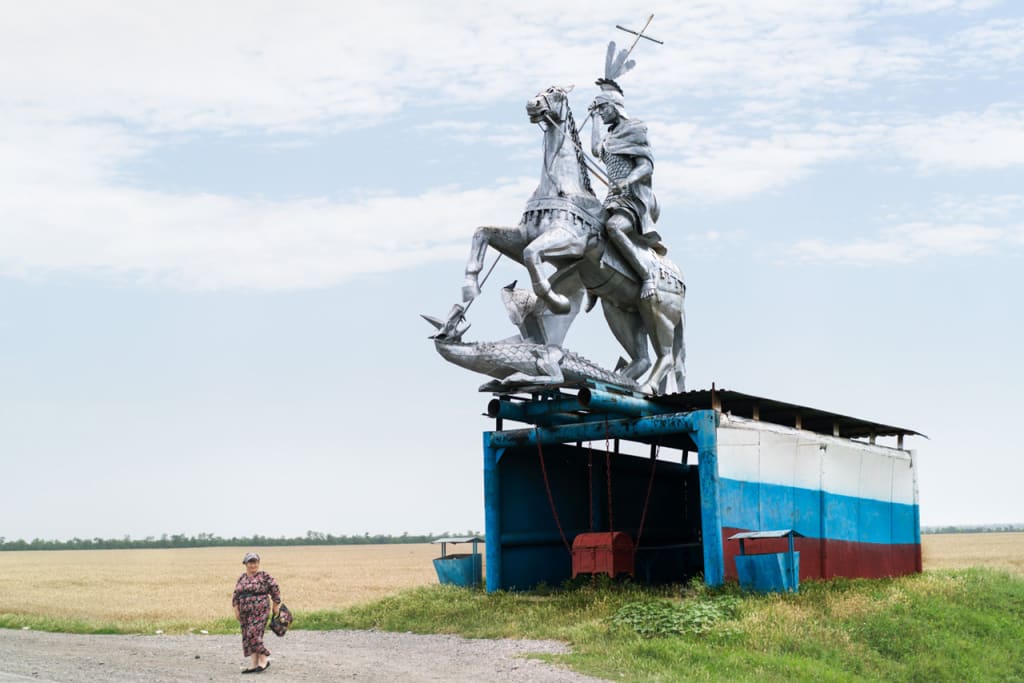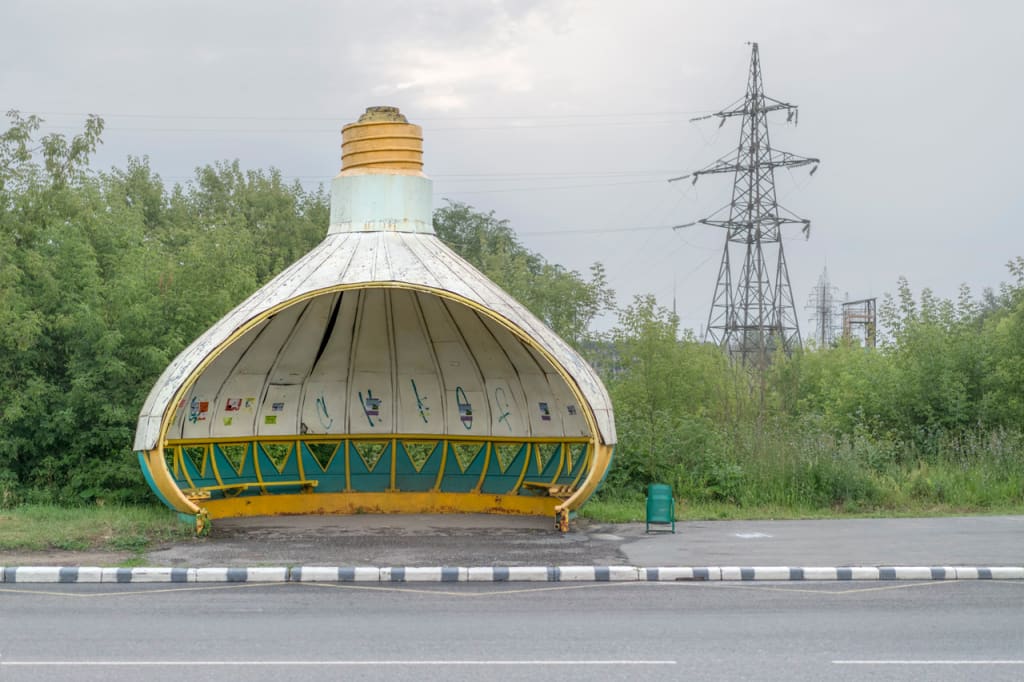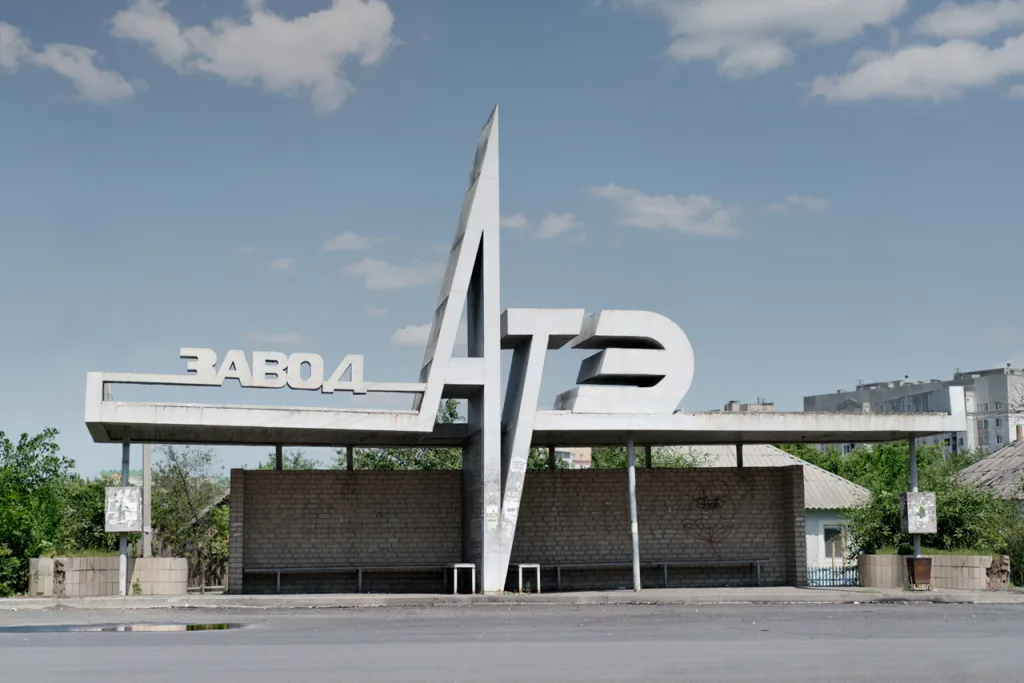If bus stops in most parts of the world give the bare minimum of shelter–and sometimes not even a place to sit–the former Soviet Union went to the opposite extreme, with ornate bus stops shaped like birds, castle turrets, and train engines, or covered in detailed, propaganda-themed mosaics, even in rural areas with few, if any, riders.
Photographer Christopher Herwig first saw the bus stops on a bike trip from London to Moscow in 2002, and spent years documenting many of them. In a book called Soviet Bus Stops, he shared bus stops from remote parts of smaller Soviet republics. For a new volume, he returned to document more, focusing this time on Russia and Ukraine.

While some of the stops are still in use, in some cases, the stops were so remote that Herwig wondered if they had ever been used. Near one Ukrainian village, he realized that a bus stop he visited was off the map. “I looked down on Google maps and Garmin GPS, and there was no road anymore,” he says. “I was literally in the middle of nowhere. I had driven off of any known road, and there were still these bus stops.”
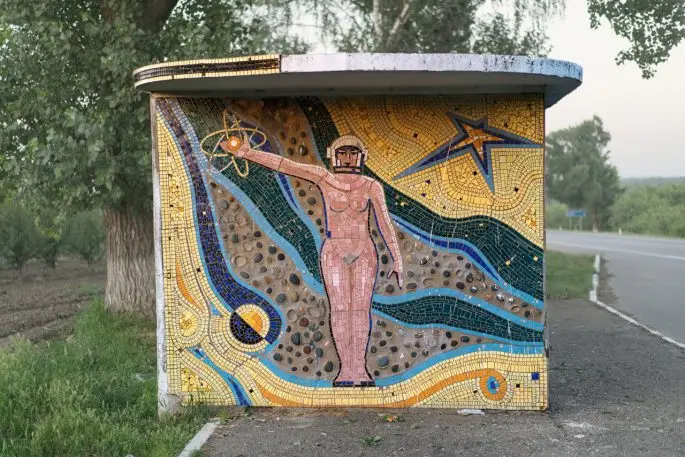
“The architects I talked to were fairly free in their ability to create these, and they all say that this didn’t follow the same restrictions that you would get if you were building something important like a theater or something else,” says Herwig, adding, “In some ways the idea can very likely be linked to some centralized Soviet ideology, but I think in the implementation of it, there’s definitely room for individuality.”
Recognize your brand’s excellence by applying to this year’s Brands That Matter Awards before the early-rate deadline, May 3.
